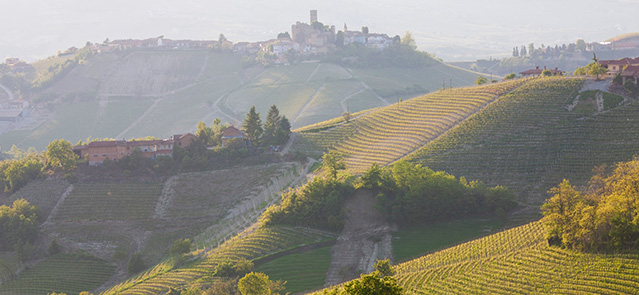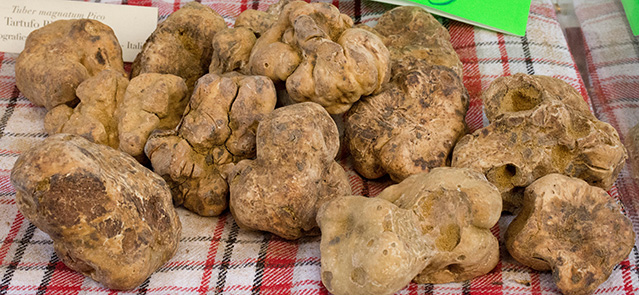What are the perfect wine and food combinations?
March 02, 2017
Everyone knows that a bold Cab Sav goes with a rare steak, but what happens when the flavours get a bit more exotic? Wine writer Zeren Wilson looks for the rules when it comes to finding the right wine for the right food

Photo: Alamy
The hoary old subject of food and wine matching is one that can provoke intense debate among food and drink industry professionals. We all like to think that we are coming from a righteous place of truth and justice, holding the keys to some kind of mystical box of tricks that will deliver dining nirvana. The dark art of choosing which wines are best in any given scenario requires years and years of study and research, doesn’t it? Well, hardly – but a bit of practice helps.
Chef Auguste Escoffier published a recipe for boeuf Bourguignon (a Burgundian dish braised in the wine of the region) in the early 20th Century, which soon became the benchmark recipe. He later went to state in 1928 that red meat and Burgundy should be paired together. A few years later the Michelin Guide began to recommend wine with certain dishes, before Pierre Andrieu presented a systematic approach to pairing wine with food throughout a meal. A nascent discussion had begun about what’s ‘correct’ to drink with your food.
Playing by the rules
The systematic approach was very much of the ‘red with red meat’, and ‘white with white meat’ school of thinking, without too much (if any) thought about how things were sauced or what they were accompanied with on the plate, which is often the more important consideration.
Food and wine matching would have been going on before this discussion, of course, without anyone thinking about it. Burgundian monks would have been quaffing the fruits of their vinous labour with local meats and cheeses… the Romans would have happily been sluicing down rivers of the stuff.
Of course, there’s a more relaxed ‘rule’ that ensures you will nail your combination every time: drink what you like to drink with food that you like to eat. There, job done. I’m joking, of course, but only partly – sometimes no amount of chin stroking and analysis can override what your own, very personal, instincts are yelling at you to act upon. Ultimately, there are indeed certain combinations of styles and wine and food that help to flatter each other. Others still actively jar and work against achieving any kind of harmony.
It makes sense that wines that are produced in a certain region will naturally be the ideal partners to the food of that region. Founder of The Winemakers Club, John Baum, travels extensively while looking for new wines to import:
‘Food and wine have always gone hand in hand with each other in winemaking regions, evolving through the years to work with one another. In regards to matching food with wine, the best recommendation 90% of the time is if you are creating a dish that originates in a wine country, choose a wine local to the region.’

Food and wine have always gone hand in hand with each other in winemaking regions. Photo: Alamy
Classic matches
So here we begin to uncover the root of some classic matches: aged Nebbiolo’s savoury, earthy funk with white truffles from its home of Piedmont; rich Sangiovese blends with a grilled Tagliata steak in Tuscany; boeuf Bourguignon alongside a drop from up the road (Monsieur Escoffier was on to something). It can be useful to think of elements in a dish that can knock a wine for six, and work backwards.
Chilli flavours: A real, snarling enemy for many wines is chilli heat, ratcheting up the volume of mouth-coating tannins (made up of the skins, pips and stalks) in red wines, and accentuating the perception of higher alcohol wines. Juicy, unoaked, smoothly supple, fruit-forward reds have the best chance here, such as a Chilean Merlot blend (try it if you fancy red rather than a crisp lager with your Indian curry).
Thai cuisine: With added elements of sourness from lime juice, sweetness from palm sugar and aromatic herbs, fiery Thai dishes can do a good job of potentially overshadowing a wine. An off-dry Riesling from the Mosel manages to cope with many of the pitfalls – try a Kabinett from Clemens Busch, a modest 8.5% ABV. Its touch of sweetness helps to tame the heat, deflecting the ‘shoutier’ elements with its own aromatic complexity and bright acidity.
Other aromatic varietals like Pinot Gris and Pinot Blanc (particularly from Alsace) also work well for similar reasons. If you’re not put off by the blowsy, perfumed lychee and rose scent of Gewürztraminer, this could work too.
Rich meats: Acidity is a key part of a wine’s armoury in combatting overwhelming elements, and Pinot Noir works well when slicing through the fatty richness of a meat such as duck. When asked about great matches, Charlie Mellor, owner of The Laughing Heart wine bar in Hackney, doesn’t hesitate: ‘Peking duck and Burgundy wine. This one needs no explanation. Try letting down your duck sauce with a little of the wine.’ Ah, the old trick of drinking whatever you use to cook the dish with. Works every time.
Aromatic flavours: Chef Tomos Parry highlights a wine style that is having something of a moment, namely ‘orange’ or ‘skin contact’ wines, which are white wines left in contact with their skins to extract layers of texture and flavour. ‘They work well with vibrant, aromatic, spicy dishes, providing a constant refreshing quality between dishes.’
Seafood mix: Parry offers a favourite classic combination: ‘Albariño with carabiñieros prawns. Doesn’t get much better having these two in Valencia and Mallorca.’ A wine made in the sea spray kissed north west of Spain in Galicia, eaten together with shellfish, makes poetic sense, even if the regions differ a tad.

An earthy glass of Nebbiolo works well with white truffles. Photo: Alamy
Don’t believe the hype
Some received ideas about wine and food would appear to have more style than substance: step forward the chief pairing culprit of Champagne and chocolates. As a general rule with desserts, what you’re drinking should be sweeter than the food you’re eating, otherwise the wine risks being stripped of its fruit character, coming across as lean, mean and tart.
A sweeter ‘demi-sec’ style of Champagne is the only one that would have a chance here, but you can be sure most presents of the two together won’t involve this lesser seen style of fizz. Similarly, red wine and chocolates requires the wine to have a turbo-charged whoosh of extra ripeness and alcohol. Or go for a fortified wine like Banyuls, with a satisfying whack of sweetness and 17% ABV.
Or forget all of the above, crack open a Sauvignon Blanc, and tuck in to bread and butter pudding on the sofa. Actually, don’t. Please don’t.
Your wine collection is automatically covered up to £10,000 with our Hiscox contents insurance
Zeren Wilson is a writer and wine consultant whose work has appeared in the Evening Standard, The Guardian, Noble Rot and Completely London. He runs the website Bitten & Written






 Very satisfied with the service from Hiscox as always
Very satisfied with the service from Hiscox as always

